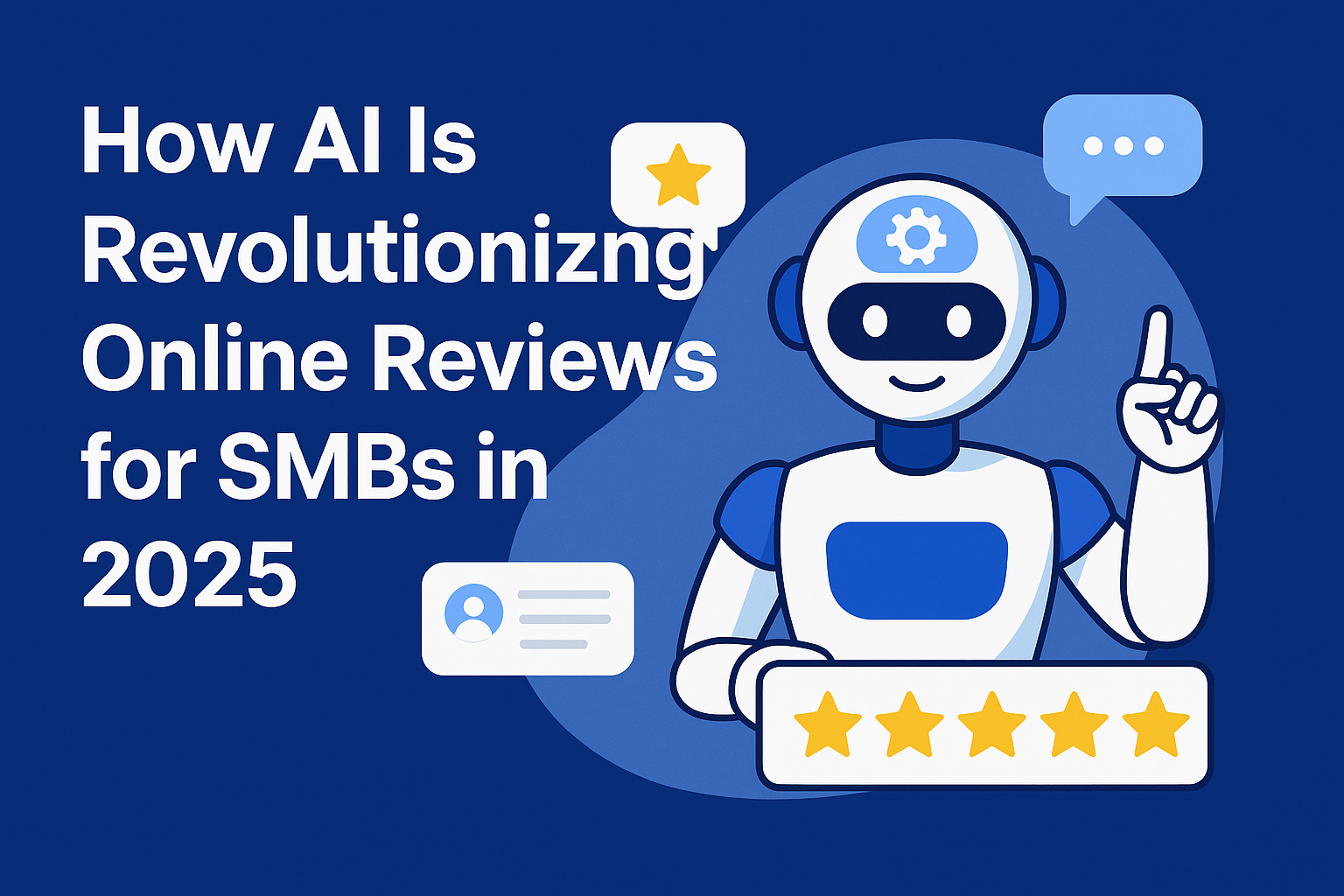Best Practices for Multi-Location Review Management in 2025

In the digital age, reputation is everything. For multi-location businesses, it’s even more crucial—and more complex—to protect and grow your brand through online reviews. Whether you’re a franchise, a retail chain, a healthcare network, or a nationwide service brand, online reviews can make or break your local presence, influence search rankings, and directly impact revenue.
By 2025, the landscape of review management has evolved dramatically:
- Consumers expect hyper-localized, authentic feedback.
- Google and other search engines rely on AI to summarize reviews into search and AI-powered results.
- Regulations have tightened around fake reviews and data privacy.
- Generative AI has changed how reviews influence not just search rankings but the very answers customers see in AI-powered search results.
So how can multi-location businesses stay ahead?
This comprehensive guide shares best practices for managing reviews across multiple locations in 2025. Discover how to:
✅ Maintain brand consistency while allowing local authenticity
✅ Boost local SEO rankings in every market
✅ Protect your reputation at scale
✅ Leverage AI for smarter insights and faster responses
✅ Stay compliant with evolving laws and platform rules
Let’s dive in.
Why Multi-Location Review Management Matters More Than Ever
The stakes have never been higher for multi-location brands. Here’s why:
Consumers Demand Hyper-Local Proof
Modern consumers don’t simply want to know whether your brand is “good.” They want to know whether your specific location offers great service, friendly staff, fast delivery, or clean facilities.
- 76% of consumers regularly read reviews for local businesses.
- Consumers are twice as likely to trust reviews mentioning specific locations or staff names.
If your locations lack authentic, positive reviews, potential customers may choose competitors with a better local reputation—even if your brand is strong overall.
AI-Powered Search Changes Everything
AI-driven search experiences like Google’s Search Generative Experience (SGE) now summarize review content directly in search results. For example:
“Best orthodontist in Chicago? Dr. Rivera’s practice on Clark Street has excellent reviews for short wait times and friendly staff.”
If your locations lack quality reviews, you risk being excluded from AI-generated search answers.
Local SEO Competition is Fierce
Multi-location businesses face tough competition from:
- Other large chains
- Highly focused local independents who invest heavily in reviews
- New players leveraging AI tools to appear more visible in local searches
Strong, consistent review management is now a core competitive edge.
Challenges Unique to Multi-Location Review Management
Managing reviews for a single business location is challenging. Multiply that by 10, 50, or even 500 locations, and you face:
Inconsistent Customer Experiences
Each branch might:
- Offer slightly different services
- Have different staff personalities
- Deliver varying levels of service quality
This can create inconsistencies in reviews, risking both brand perception and SEO rankings.
Data Overload
Multi-location brands often drown in review data:
- Tens or hundreds of thousands of reviews per year
- Reviews scattered across Google, Facebook, Yelp, industry-specific platforms
Without centralized systems, key insights can be missed.
Platform Confusion
Different platforms have different rules:
- Google prohibits certain types of review solicitation.
- Yelp discourages direct asks for reviews.
- Industry-specific platforms often have unique policies.
Navigating these for each location is an operational and legal challenge.
Difficulty Responding at Scale
Fast, personalized responses to every review are essential. But for businesses managing hundreds of locations, this can feel impossible without the right systems and technology.
Four Core Principles for 2025
Successful multi-location review strategies in 2025 are built on these four pillars:
1. Centralized Oversight with Local Flexibility
- Use a single dashboard to monitor reviews across all locations.
- Empower local managers to engage authentically with customers in review responses.
2. Consistency in Process
- Standardize how you ask for reviews across locations.
- Provide templates for responses—but allow local managers to add personal touches.
3. Leverage AI—Thoughtfully
AI tools can:
- Analyze sentiment across thousands of reviews
- Suggest draft responses
- Detect suspicious patterns in reviews
However, ensure your AI tools avoid robotic or repetitive messaging.
4. Compliance and Transparency
Stay up-to-date with:
- FTC rules on fake reviews and endorsements
- Platform-specific guidelines (especially Google and Yelp)
- Privacy laws around customer data usage
Best Practices for Multi-Location Review Management in 2025
Let’s explore practical steps multi-location brands can take to master review management in 2025.
1. Build and Maintain Accurate Google Business Profiles
Your Google Business Profiles (GBPs) are crucial to local SEO in 2025. For multi-location brands:
✅ Claim Every Location
- Don’t rely on a single corporate profile.
- Create individual profiles for each physical location.
✅ Ensure NAP Consistency
NAP stands for Name, Address, Phone. Ensure consistency across:
- Your website
- Directory listings
Inconsistent information can harm local rankings.
✅ Add Localized Content
- Upload unique photos for each location.
- Highlight local staff, community involvement, and unique services.
✅ Manage Q&A
- Monitor and answer questions in GBP regularly.
- Use AI tools to identify recurring or sensitive topics.
✅ Embrace New Google Features
By 2025, Google offers:
- AI-generated business summaries
- Advanced “Areas Served” mapping
- Enhanced product and service listings
Complete and regularly update your profiles to appear in these advanced search results.
2. Standardize Your Review Request Process
The #1 driver of more reviews? Asking.
Best Practices:
✅ Define Approved Channels
- Email invitations
- SMS messages
- In-store signage with QR codes
✅ Avoid Review Gating
Platforms like Google forbid “gating,” which means only asking satisfied customers to leave public reviews. Instead:
- Invite all customers to leave feedback.
- Capture both positive and negative experiences honestly.
✅ Optimize Timing
- Send review requests soon after a transaction.
- Timing should fit your industry:
- Same-day for restaurants
- 1-3 days later for professional services
✅ Localize Messaging
Personalized invitations perform better. Include:
- The manager’s name
- Location name
- Specific services provided
Avoid bland, generic brand-level requests.
3. Respond Quickly—and Personally
By 2025, fast, authentic engagement is non-negotiable.
Why Respond?
- Businesses that reply to reviews see 35% higher customer engagement.
- Google may factor response rates into local rankings.
Best Practices:
✅ Set Response Time Goals
- Establish service-level agreements (SLAs), e.g. “respond to all reviews within 48 hours.”
✅ Empower Local Managers
- Provide templated responses for:
- Positive feedback
- Negative experiences
- Encourage personalization:
- Mention the customer’s specific experience.
- Reference staff members or services provided.
✅ Use AI Responsibly
AI tools can:
- Draft tailored responses
- Suggest empathetic language
- Identify reviews that need escalation
But always human-check AI drafts before publishing.
4. Monitor Review Sentiment Across Locations
Manually analyzing thousands of reviews is impossible. AI tools can:
✅ Run Sentiment Analysis
- Aggregate ratings across locations.
- Spot recurring issues (e.g., “slow service” at one branch).
✅ Benchmark Locations
- Compare average ratings between locations.
- Identify underperformers quickly.
✅ Spot Emerging Trends
- Detect new complaints or opportunities before they become widespread.
Platforms like GiveMe5.ai offer dashboards that translate massive review volumes into actionable insights.
5. Detect and Manage Fake Reviews
Fake reviews are still rampant in 2025, posing significant risks for multi-location brands.
Common Signs:
- Sudden spike in 5-star or 1-star reviews
- Duplicate text across reviews
- Reviewers with no previous activity
Best Practices:
✅ Deploy AI Detection Tools
- Flag suspicious patterns.
- Submit reports to review platforms promptly.
✅ Educate Local Teams
- Train staff to recognize suspicious offers for “buying reviews.”
- Implement clear policies with consequences for misconduct.
✅ Respond Politely
If you suspect a fake negative review:
- Respond politely and professionally.
- State you can’t verify the reviewer’s visit.
- Avoid arguments or personal attacks.
6. Maintain Compliance and Avoid Legal Risks
Regulations have tightened by 2025:
✅ FTC Enforcement
The FTC now actively fines businesses for:
- Posting fake reviews
- Suppressing negative feedback
- Failing to disclose incentives
✅ Platform Rules
- Google and Yelp prohibit review gating.
- Some platforms ban direct incentives for reviews.
Best Practices:
- Keep records of how you solicit reviews.
- Avoid spammy or templated responses.
- Stay updated on privacy laws, especially regarding personal data used in review requests.
Tools to Simplify Multi-Location Review Management
Modern software makes multi-location review management achievable—and far less overwhelming.
Key Features to Look For:
✅ Unified Dashboards
- Aggregate reviews from Google, Facebook, Yelp, and industry-specific platforms into one place.
✅ Role-Based Permissions
- Give local managers appropriate access while maintaining corporate oversight.
✅ AI Insights
- Automatically analyze sentiment.
- Suggest personalized responses.
- Flag suspicious reviews.
✅ Automated Invites
- Send review requests automatically after transactions.
- Reduce manual workload.
Platforms like GiveMe5.ai are purpose-built for multi-location businesses, offering:
- CRM integrations
- Location-based sentiment analysis
- Compliance-safe workflows
Investing in the right tools saves time, reduces errors, and improves your brand’s reputation.
The Competitive Edge in 2025
Multi-location businesses face higher stakes than ever—but also tremendous opportunities.
In 2025:
- Consumers expect local authenticity and fast engagement.
- Google and other search engines rely heavily on review signals for rankings and AI-generated search results.
- Regulations demand transparency and ethical practices.
Brands that thrive will:
✅ Centralize oversight while empowering local teams
✅ Respond quickly and personally to all reviews
✅ Leverage AI for insights and efficiency—but maintain human oversight
✅ Prioritize compliance to avoid costly penalties
Every review isn’t just a piece of feedback—it’s a public signal to both search engines and future customers about whether your brand is worth trusting.
Treat multi-location review management as a strategic pillar of your growth strategy in 2025. Your brand reputation—and revenue—depend on it.
Ready to Take Control of Your Multi-Location Reviews?
Curious how GiveMe5.ai can help you manage reviews across all your locations—and transform reputation into revenue?





